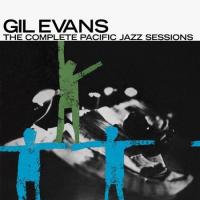Jazz bands and enthusiast are always number one on my list, they are the unique and talented bunch. When given the chance to choose I would still go with the jazz music. - Scott Safadi
Evans Album Lost in the Shuffle Has Luster Again
Pure Pleasure’s musical archeological digs have managed to find some interesting obscurities, this Gil Evans session from 1959 being one of them. It certainly deserves to be brought to your attention. However, its appeal will be limited to aficionados of Evans’ arranging excellence than for any other reason, though many fine players are involved, particularly and obviously trumpeter Johnny Coles as well as Steve Lacey, among others.
Evans’ is, of course, best known for his work with Miles Davis, beginning with his nonet arrangements recorded in 1949 and 1950 that were issued in 1957 as Birth of the Cool as well as for his two great Impulse albums Out of the Cool and Into the Hot that have been reissued by Analogue Productions on double 45rpm sets.
This 1959 set has all of the familiar dense brass (including French Horn, Tuba) and woodwind flourishes familiar to Davis fans on Miles Ahead, Porgy and Bess, and Sketches of Spain. In fact, it could be argued that those were Evans sessions in which Davis participated much as this session is with Coles.
The standards include Monk’s “Straight No Chaser,” John Lewis’s “Django”, Bix Beiderbecke’s “Davenport” and the interestingly titled “Chant of the Weed” that served as the famed Cotton Club’s theme song.
Evans’s two orchestras used for these sessions were packed with greats including Elvin Jones, Steve Lacey, Curtis Fuller and Budd Johnson among others with Evans on piano in both. As a textbook course in weaving soloists in and out of the dense orchestral thicket, this record can’t be beat and some of the solos are nothing less than monumental.
But beyond that academic exercise of interest to but a few, is an atmospheric, cinematic approach to playing and arranging that is as startling and evocative today as it must have been back in 1959.
The mono recording is not up to audiophile standards. It’s distantly miked, with few mikes employed (if in fact there was more than one!) and this makes it sound as if you’re eavesdropping from outside the room with the door open more than as if you’re in the room with the musicians.
So I wouldn’t say this was for “audiophiles,” but if you appreciate this arranger’s art and wish to hear it realized fully through a series of mostly recognizable jazz standards packed with great soloing, your listening will be well-rewarded.
- Log in or register to post comments




